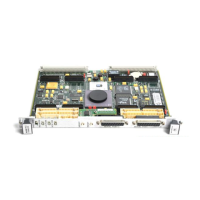Modifying the Environment
http://www.motorola.com/computer/literature 3-13
3
ROM Boot Direct Ending Address FFDFFFFC Last location tested when the Bug searches for
a ROMboot module.
Network Auto Boot Enable [Y/N] N Network Auto Boot function is disabled.
Network Auto Boot at power-up
only [Y/N]
Y Network Auto Boot is attempted at power-up
reset only.
Network Auto Boot Controller
LUN
00 Specifies LUN of a disk/tape controller module
currently supported by the Bug. Default is $0.
Network Auto Boot Device LUN 00 Specifies LUN of a disk/tape device currently
supported by the Bug. Default is $0.
Network Auto Boot Abort Delay 5 The time in seconds that the Network Boot
sequence will delay before starting the boot.
The delay gives you the option of stopping the
boot by use of the Break key. The time span is
0-255 seconds.
Network Autoboot Configuration
Parameters Pointer (NVRAM)
00000000 The address where the network interface
configuration parameters are to be saved in
NVRAM; these are the parameters necessary
to perform an unattended network boot.
Memory Search Starting Address 00000000 Where the Bug begins to search for a work
page (a 64KB block of memory) to use for
vector table, stack, and variables. This must be
a multiple of the debugger work page, modulo
$10000 (64KB). In a multi-controller
environment, each MVME162P4 board could
be set to start its work page at a unique address
to allow multiple debuggers to operate
simultaneously.
Memory Search Ending Address 00100000 Top limit of the Bug’s search for a work page.
If no 64KB contiguous block of memory is
found in the range specified by Memory
Search Starting Address and Memory Search
Ending Address parameters, the bug will place
its work page in the onboard static RAM on the
MVME162P4. Default Memory Search Ending
Address is the calculated size of local memory.
Table 3-3. ENV Command Parameters (Continued)
ENV Parameter and Options Default Meaning of Default

